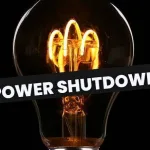The National Sample Survey Office (NSSO), which conducts the survey, also notes that the current survey has undergone some changes as compared to the previous surveys on consumption expenditure. These include an increase in the number of items from 347 to 405, a separate questionnaire for food items, consumables and services and durable goods along with a questionnaire for household characteristics and demographic particulars as opposed to a single questionnaire earlier, multiple visits for data collection as opposed to a single visit earlier and computer-assisted interview compared to the more traditional interview method. Given the number of changes introduced in the current survey, NSSO observes that comparison with earlier surveys may not be accurate. However, some qualified comparison of the results of the current expenditure survey with those of earlier surveys may offer clues into changes in the share of expenditure on energy. The HCES collected data from 8,723 villages and 6,115 urban blocks spread over the entire country covering 261,746 households with 155,014 households in rural areas (59 percent) and 106,732 households in urban areas (41 percent). The two energy-related items covered in the survey are fuel and light and conveyance. Based on the 2011-12 survey (68th round), fuel & light expenditure includes expenditure on coke, charcoal and chips, dung, kerosene (obtained through the public distribution system [PDS] or through the open market), coal, liquefied petroleum gas (LPG) and electricity. Conveyance includes fares charged for public transport (air, train, bus, three-wheeler and others), school buses, and rickshaws (hand-drawn and motorised). Petrol and diesel consumed in personal four and two-wheeled vehicles are likely to be covered under the item “other conveyance expenses”. According to the 2022-23 survey, rural monthly per capita consumption expenditure (MPCE) on energy and energy services (fuel & light plus conveyance) was INR536 while it was INR 959 in urban areas. The total MPCE was INR3860 in rural households and INR6521 in urban households. Rural household expenditure on energy and energy services was 13.8 percent of total consumption expenditure while the share of urban household expenditure on energy and energy services was 14.7 percent. As per the 2011-12 survey, the all-India average MPCE on fuel & light and conveyance was INR174 and that of urban households was INR347. The total MPCE was INR1,430 in rural areas and INR2,630 in urban areas. The share of energy and energy services (fuel& light and conveyance) in total MPCE was 12 percent in rural areas and 13 percent in urban areas. The MPCE for urban areas has increased by an annualised rate of about 8.6 percent in urban areas and by about 9.4 percent in rural areas from 2011-12 to 2022-23. The MPCE for energy and energy services grew by an annualised rate of 10.7 percent in rural areas while it grew by an annualised rate of 9.6 percent in urban areas in the same period. Expenditure on energy and energy services grew faster than expenditure on food and non-food expenditure. This could either mean energy prices increased more than that of other commodities or that households are consuming more energy than they did before. The MPCE share of energy and energy services in total MPCE is higher in urban areas than in rural areas in 2011-12 as well as in 2022-23 when energy used for conveyance is included. This suggests that higher consumption of energy and energy services in urban areas, especially for transportation. This is in line with one of the broad observations of the survey that non-food expenditure (including expenditure on energy and energy services) is higher in urban areas than in rural areas. Despite the dramatic increase in the price of petroleum products in the early 2020s, partly because of the conflict over Ukraine and partly because of the reduction in subsidies and increase in taxes, the share of MPCE on energy services has not increased proportionally. This could indicate a reduction in energy consumption by households.
Energy Expenditure in India

Sign Up For Daily Newsletter
Be keep up! Get the latest breaking news delivered straight to your inbox.
By signing up, you agree to our Terms of Use and acknowledge the data practices in our Privacy Policy. You may unsubscribe at any time.
Leave a Comment Leave a Comment
Stay Connected
Latest News
Recent Posts
- Panzila Top Zanskar and Khardung La Pass in Ladakh received the season’s first snowfall.
- ACB arrests Policeman for accepting bribe in Rajouri
- Traffic Police issues advisory for August 26 on Jammu-Srinagar NH, Mughal Road, SSG Road
- KPDCL announces power shutdown in Kashmir Parts
- One among injured in Shopian accident succumbs






